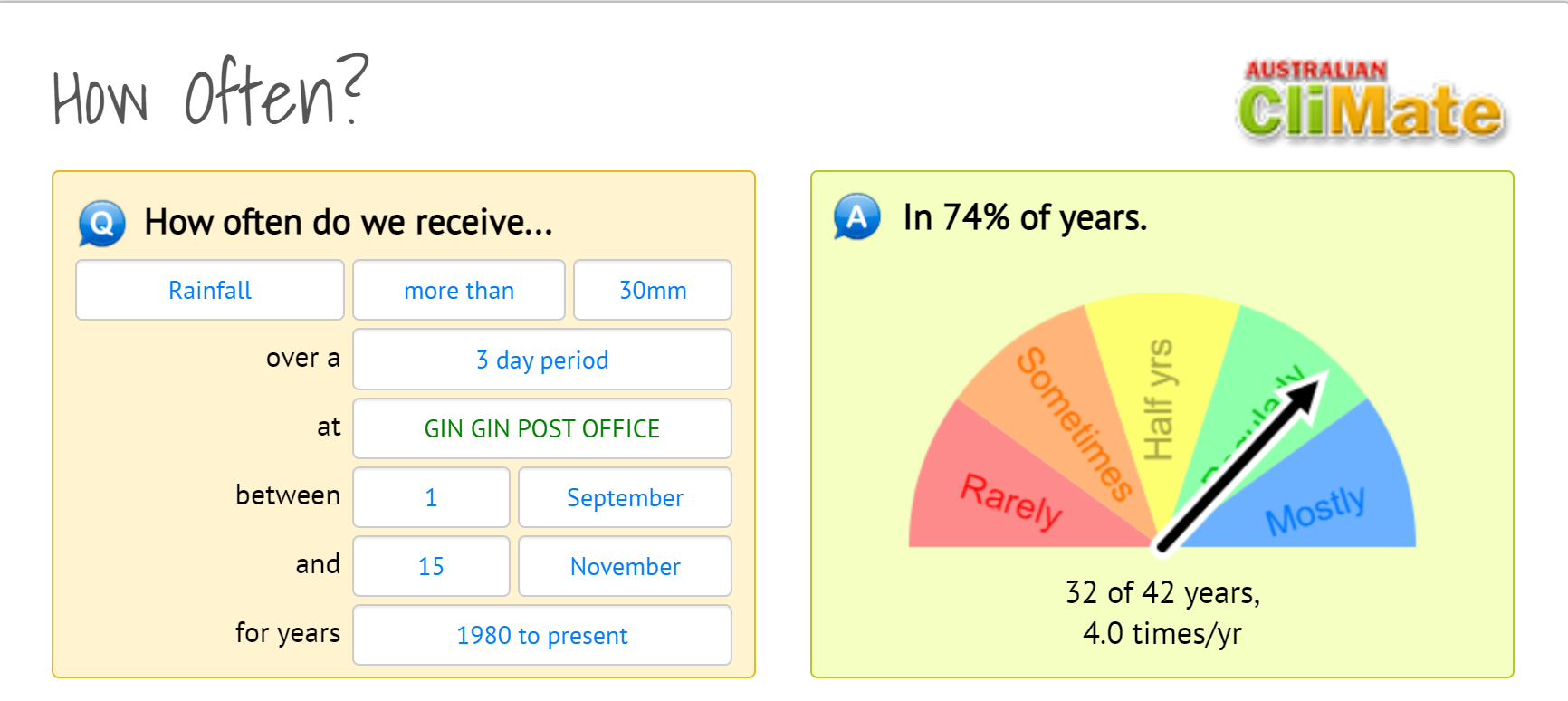Break of season rules for forage budgets
Key messages
- Forage budgeting is a method of estimating how long a specific number of animals can stay in a paddock without negatively impacting the landscape.
- The success of a forage budget depends upon the accuracy of the information put into it, including the estimated date of ‘break of season’.
- A break of season rule that is met about 70–80 % of the time (7 or 8 years in 10) is relatively safe.
- An example break of season rule that suits most of monsoon influenced northern Australia is: the date at which 30 mm falling across three days after September in 70% of historical rainfall records.
- Online tools such as How Often can assist in this calculation
Preparing to preserve
Forage budgets are a way of ensuring you stock a paddock at a rate that leaves you with enough feed for your cattle, and, enough stubble on the ground to protect your soil and pastures.
At best, dry season forage budgets are a guesstimate. One of the big variables is the date you nominate as the end of the budget period. Usually this is a date by which you can reasonably expect sufficient rain that will stimulate significant grass growth. For most areas it is later than we might expect. This may be because we tend to remember those few years when 100 mm falls in spring. We remember them because they are exceptions to the rule rather than the rule itself.
What constitutes a ‘break in the season’?
The definition of ‘break in the season’ is dependant on a number of factors.
How effective rain is at stimulating pasture grown depends on how quickly it falls and how dry conditions were before the rain. The resultant pasture response is also variable, depending on the soil type and the land condition. Generally, pasture on lighter soils responds more quickly and to smaller rainfall events than pasture on heavy clays.
Finding a reasonable end date
There is variability in timing and quantity of rainfall across northern Australia. Even producers with the same rainfall will have different ideas about what constitutes ‘break of season rules’ – this is related to their attitude to risk. For example, let’s look at Gin Gin in the north Burnett region of Queensland.
Many producers consider 100 mm of rain over a two-week period by the end of September as an effective break (and it certainly is!). Others nominate 50 mm in a week by the end of November.
However, how often do we see these sorts of rainfall events?
Packages such as How Often enable us to view the rainfall records for many districts over many years to determine safe break of season rules.
If we look at the past 42 years of rainfall records for Gin Gin (Queensland), we can determine the chances of meeting three ‘break of season rules’; 30 mm in 3 days, 50 mm in a week, or 100 mm in a fortnight, by the end of each month from September to January.
| Percentage of years where the beak of season rule is met by the end of the given month |
|||
|---|---|---|---|
| 30 mm in 3 days | 50 mm in a week | 100 mm in a fortnight | |
| September | 23% | 12% | 5% |
| October | 58% | 47% | 21% |
| November | 79% | 67% | 33% |
| December | 95% | 86% | 51% |
| January | 98% | 86% | 65% |
At Gin Gin, you cannot rely on getting 100 mm of rain over a fortnight by the end of September. It has only happened twice in the last 42 years; 1998 and 2010!
The table highlights the unreliability of a spring break. In setting safe break of season rules for forage budgeting you need to consider your attitude to risk. A break of season rule that is met about 70–80 % of the time (seven or eight years in ten) is relatively safe.

In this case, 30 mm in 3 days by the end of November will be a safe rule for most land types. So when you calculate your forage budget in the area around Gin Gin, you would want the available feed to last until the end of November. For land types with heavy clay soils, 50 mm over a week by the end of December would be a safer bet.
Remember, forage budgeting is an inexact science.
Be realistic about when you can reasonably expect a break to the season.
More information
Dry season pasture budget – a guide for stocking rates (eBook) →
Forage budgeting →